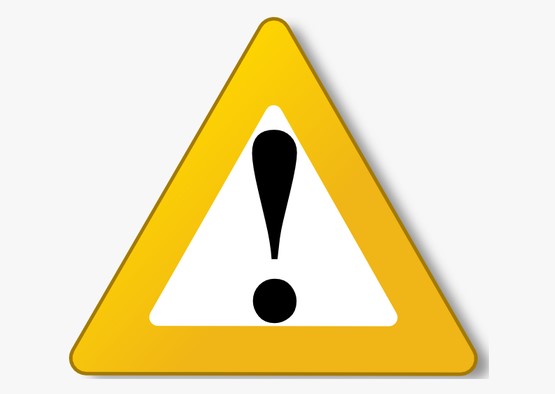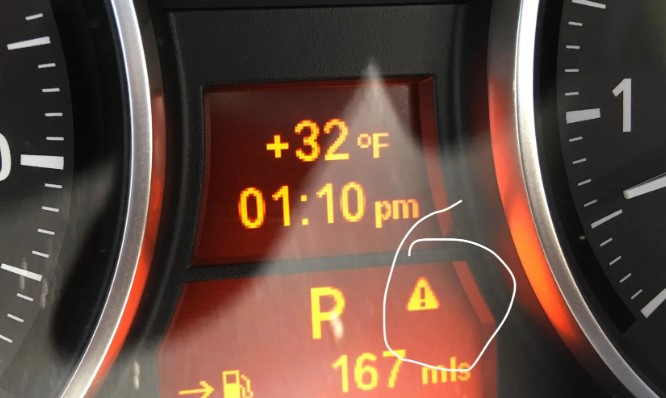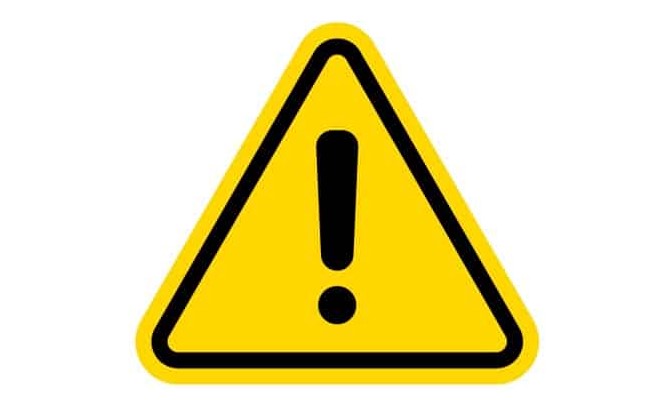When cruising the road, encountering an orange triangle sign on the dashboard can be unsettling. This symbol, often overlooked, is vital and hints at varying car issues, some minor while others are more grave.
This guide focuses on understanding the implications of the orange triangle sign on the dashboard, its root causes, and the immediate steps one should embark upon when it appears.
🚀Recommended article: What Warning Lights Will Fail MOT?
Decoding the Orange Triangle Sign

The orange triangle symbolizes an alert or warning about a potential malfunction in the vehicle. Typically, this sign will be paired with a descriptive message on the dashboard, clarifying the concern.
Prominent reasons for the illumination of the orange triangle sign encompass:
- Hitches related to the engine, such as an oil deficiency, misfires, or anomalies with the engine’s computer system.
- Glitches within the transmission point to diminished fluid levels or complications with the transmission’s computing system.
- Brake-related concerns indicate a possible low brake fluid level or other brake system anomalies.
- Tire-related issues hint at reduced tire pressure or sensor malfunctions.
- Miscellaneous troubles, including potential faults within the electrical grid or emission controls.
Immediate Course of Action upon Seeing the Orange Triangle Sign
Spotting the orange triangle demands swift attention. It’s imperative to consult a skilled mechanic promptly to pinpoint the problem and get recommendations on the requisite repairs.
In the interim, one should exercise caution while driving, evading strenuous maneuvers like sharp turns, rapid acceleration, or abrupt braking.
Typical Malfunctions Leading to the Orange Triangle Alert

Some prevalent issues that might trigger this warning sign are:
- Dwindling Oil Levels: A grave concern that can inflict irreversible damage to the engine. If the orange triangle is coupled with a “Low Oil Pressure” alert, one should immediately halt the vehicle and shut down the engine. It’s advisable to replenish the oil and restart the car. Should the warning persist, seeking a mechanic’s expertise is crucial.
- Engine Misfires: This pertains to the inconsistent firing of the engine’s cylinders, potentially causing it to function erratically, lose potency, or release dark fumes. Professional intervention is essential if “Misfire” is displayed with the triangle.
- Transmission Glitches can make the vehicle jolt, shift unpredictably, or stall gear changes. An accompanying “Transmission Problem” message warrants immediate mechanical attention.
- Braking Hitches: Issues here can render brakes ineffective, or they might become unpredictable. A concurrent “Brake Problem” message is a call for urgent action.
- Tire Anomalies can manifest as unusual noises, the car veering off course, or reduced traction. A “Tire Problem” alert alongside the triangle is a sign to consult a mechanic.
In Conclusion
The appearance of the orange triangle sign is a stern caution about your vehicle’s health. It’s paramount to heed this warning and get the car inspected by a professional at the earliest.
Added Precautions
Beyond the suggestions above, here are supplementary measures to forestall the emergence of the orange triangle sign:
- Regularly schedule oil replacements and tune-ups to maintain your vehicle’s prime condition.
- Frequently monitor tire pressure. Insufficient pressure can strain the car’s suspension and transmission system.
- Stay vigilant about dashboard alerts. If any warning illuminates, pulling over and powering down the engine is safest. Only proceed with addressing the highlighted issue.
- Adhering to these guidelines ensures the vehicle’s optimal and safe performance.
